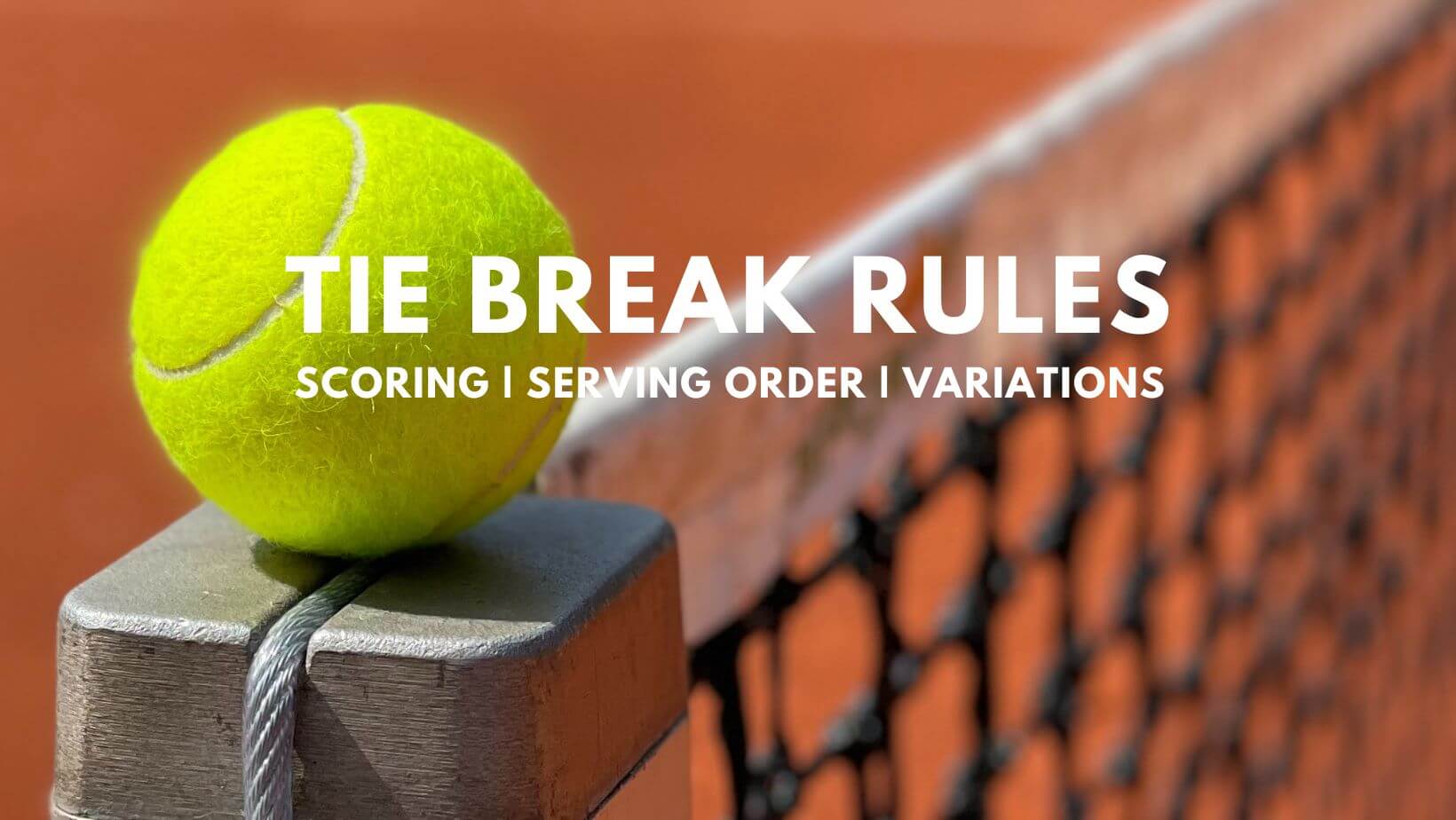Tiebreak Scoring and Mechanics: Tennis Tiebreak Rules

Tennis tiebreak rules – Tiebreaks are a sudden-death scoring system used in tennis to decide a set that is tied at 6-6. They are designed to provide a quick and decisive way to determine a winner without the need for extended deuce games.
The scoring system in tiebreaks is different from the regular scoring system used in tennis. Each point is worth one point, and the first player or team to reach seven points wins the tiebreak. However, there is a requirement that the winner must win by a margin of two points. This means that the score must be 7-5, 8-6, or 9-7, and so on.
In the realm of tennis, tiebreaks are the ultimate deciders when sets reach a 6-6 stalemate. These intense shootouts require players to navigate a complex set of rules, each point crucial in determining the outcome. For Carlos Alcaraz, his remarkable run to the Carlos Alcaraz Grand Slams has showcased his mastery of tiebreak play.
His ability to stay composed and execute under pressure is a testament to his exceptional talent. As we delve deeper into the intricacies of tiebreak rules, we cannot help but marvel at the skill and determination that Alcaraz has displayed on the court.
| Point | Score |
|---|---|
| 1 | 1-0 |
| 2 | 2-0 |
| 3 | 3-0 |
| 4 | 4-0 |
| 5 | 5-0 |
| 6 | 6-0 |
| 7 | 7-0 |
| 8 | 8-0 |
| 9 | 9-0 |
| 10 | 9-1 |
| 11 | 9-2 |
| 12 | 9-3 |
| 13 | 9-4 |
| 14 | 9-5 |
| 15 | 9-6 |
| 16 | 9-7 |
| 17 | 9-8 |
The sudden-death nature of tiebreaks can make for exciting and tense gameplay. Players are forced to take more risks and go for their shots, as there is no room for error. This can lead to some spectacular rallies and dramatic finishes.
Tennis tiebreak rules dictate a sudden-death scoring system to determine a winner when a set reaches 6-6. The player who wins seven points first, with a margin of at least two points, secures the tiebreak and the set. This format has been instrumental in the success of young stars like Carlos Alcaraz, who has emerged as a force in Alcaraz grand slams.
Alcaraz’s exceptional fitness and aggressive playstyle allow him to thrive in tiebreaks, where every point is crucial.
Player Positioning and Strategy

During a tiebreak, players adopt specific positioning and employ distinct strategies to gain an advantage. Understanding these elements is crucial for both players and spectators alike.
Court Positioning
In a tiebreak, both players stand behind the baseline, eliminating the advantage of serving or receiving from the ad or deuce court. This neutralizes the court’s geometry and forces players to rely solely on their skills and tactics.
Strategies
Players employ a range of strategies in tiebreaks, each with its own advantages and risks:
- Aggressive Net Play: Some players adopt an aggressive approach, moving towards the net after serving or returning to put pressure on their opponent. This strategy can be effective in forcing errors or creating opportunities for winners.
- Baseline Rallies: Other players prefer to engage in baseline rallies, exchanging groundstrokes from the back of the court. This approach requires patience, consistency, and the ability to hit deep and accurate shots.
Role of Serve and Return
The serve and return play a critical role in tiebreaks:
- Serve: A strong serve can put pressure on the returner, forcing them to hit a weak or defensive shot. Aces are particularly valuable in tiebreaks, as they give the server an immediate point.
- Return: A good return can neutralize the serve and give the returner the initiative. Deep returns that force the server to hit from behind the baseline can create opportunities for winners or force errors.
Variations and History of Tiebreaks

Tiebreaks have undergone significant evolution since their introduction in tennis. Initially implemented to break deadlocks in sets, they have become an integral part of the sport, shaping its competitive landscape.
Early Variations
The first tiebreak variation, known as the “sudden death” tiebreak, was introduced in 1970 at the Wimbledon Championships. In this format, players alternated serving two points each, with the first player to reach seven points winning the tiebreak.
In 1971, the “9-point tiebreak” was introduced, where players alternated serving one point each until one player reached nine points with a margin of at least two points.
Current Format, Tennis tiebreak rules
The current 12-point tiebreak format was introduced in 1975. Players alternate serving two points each until one player reaches seven points with a margin of at least two points.
Impact on Tennis
Tiebreaks have had a profound impact on tennis. They have reduced the frequency of long, drawn-out sets and made matches more exciting and unpredictable.
Tiebreaks have also leveled the playing field, allowing players with strong serving and return games to compete more effectively against those with superior baseline skills.